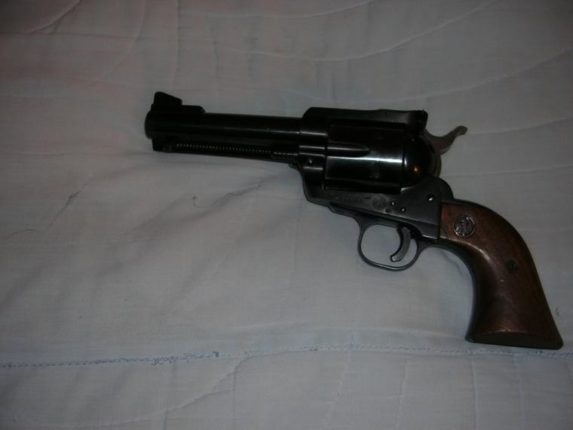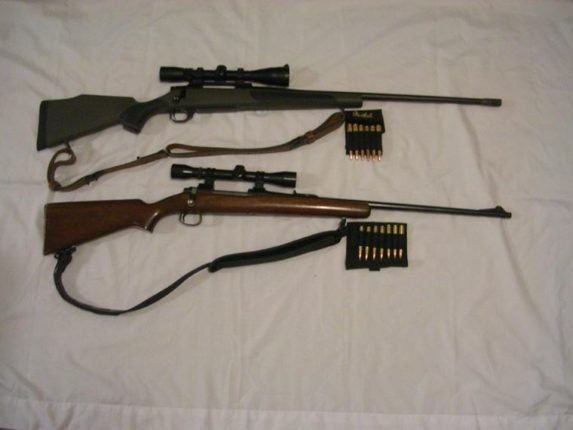There have been many more well-known or famous American hunters than can be discussed in the space allotted to a single column, so I’ll pick a few that have had an important impact on hunting. Some were bow hunters; others primarily used rifles; one hunted Jaguars with a spear, or zagaya; another gave up hunting dangerous game with a spear after one really close call and never let his .470 Nitro Express rifle leave his side for the rest of his hunting career.
President Teddy Roosevelt was one of America’s most famous hunters. He hunted all kinds of big game in the American West, Africa and South America. Roosevelt was also a leading advocate for the establishment of the national parks system in the United States and promoting wildlife conservation in the early 20th century. In 1909, he and his son Kermit went to Africa to hunt for big game species for the Smithsonian Museum in Washington, D.C.
Roosevelt once wrote, “The free, self-reliant, adventurous life, with its rugged and stalwart democracy, the wild surroundings, the grand beauty of the scenery the chance to study the ways and habits of the woodland creatures — all these unite to give to the career of the wilderness hunter its peculiar charm.”
Ernest Hemingway was one of Americas most storied writers. He was also a skilled big game hunter in the American West and Africa who was inspired by Teddy Roosevelt’s accounts of hunting in Africa.
Hemingway wrote about his African hunting experiences in,”The Green Hills of Africa,” “The Snows of Kilimanjaro” and “True at First Light.” Unfortunately, he either accidentally shot and killed himself or committed suicide at his home in Sun Valley about the time I was a teenager wondering where I would get the money for a .300 Weatherby Magnum.
I remember thinking at the time I would miss him and his writing.
Saxon Pope is generally regarded as the father of modern bow hunting and is one of the namesakes of the Pope and Young Club, North America’s foremost bow hunting organization.
Pope developed his skills under the tutelage of Ishi, the last of the Yahi tribesmen. He often demonstrated those skills by killing grizzly bears in Yellowstone National Park in the early part of the 20th century when it was legal to hunt in the area included in the park. He made his own bows and steel-tipped arrows.
Jim Bridger was one of the most legendary hunters and mountain men who explored the American West during the mid-1800s. He is believed to be the first white man to see the Great Salt Lake in Utah and then explored what eventually would become Yellowstone National Park
He was known for his great strength, endurance and excellent hunting and trapping skills. He built Fort Bridger in Western Wyoming close to the Utah/Wyoming border and was a fountain of information to the wagon trains traveling from Missouri to Oregon and other destinations in Idaho, Nevada and California.
He was also known for his tall tales, so nobody believed him when he said there were geysers in the Yellowstone country to the north of Fort Bridger.
He spoke the languages of the Sioux, the Blackfeet and the Crow and could make himself understood by the Shoshone and the Arapaho.
Fred Bear was the archer that I knew the most about as I was growing up. Although he didn’t start bow hunting until he was 29 years old, he eventually developed his own bow designs and manufactured several creative broad head designs for hunting.
He traveled the world hunting with the bows and broad heads he designed. For many years, he was the only archer who had killed every member of Africa’s big five — lion, leopard, rhinoceros, elephant and Cape buffalo — with a bow and arrow. He also used a bow to hunt and take a Kodiak bear, Alaskan brown bear and polar bear.
Fred Bear struggled with chronic emphysema later in life and died on April 27, 1988.
Sasha Siemel didn’t start life as an American. He was originally from Riga, Latvia, moved to the Mato Grasso of Brazil and found work where he could. While in Brazil, he heard of the tigreros, Guato Indians who hunted and killed jaguars with a 6- to 7-foot spear called a zagaya, on the ground, with feints and jabs and finally embedding the spear up to its hilt in the jaguar’s chest and with the shaft tucked under their arm at the arm pit hanging on and working the spear blade into the wound until either they were knocked off their feet and the jaguar rushed in and killed them, or the jaguar bled to death and expired. This type of hunting excited Siemel, and he became an under study to a Guato Indian named Joaquim, a master tigrero who killed jaguars that fed on the livestock of the Mata Grasso’s farmers. Sasha did well and learned to fight jaguars with the zagaya until he ran into the remains of his Guato teacher, who finally lost his final fight with a jaguar.
Siemel spent many years in the Mato Grasso of Brazil fighting and killing the jaguars that fed on the farmers livestock. He finally decided he was too old to live that life much longer and moved to the United States where he made movies in Hollywood depicting his exploits in the Mata Grasso.
He finally died in Green Lane, Pennsylvania, in February 1970 at nearly 88 of age.
During the 1980s, I started reading books like, “Death in the Long Grass,” “Death in the Silent Places,” “Return to the Long Grass,” etc. The author was a most highly skilled African hunting guide and cropping officer, speaker at Safari Club meetings and one of the most passionate wildlife conservation advocates in the world. His name was Peter Hathaway Capstick, and I wanted to go on safari with him. Unfortunately he died at the age of 57 years and I didn’t retire for another couple of years. Another major problem was I didn’t have the money to go on safari.
Capstick quit a promising career as a stock broker to become a hunting guide in South America, specializing in guiding jaguar hunts, before ending up in Africa as a professional hunter, guiding those who did have the money to go on hunts for Africa’s big five as well as plains game. He also served as a cropping officer and hunted elephants, leopards and Cape buffalo that were causing problems or that had actually attacked and killed natives in his area.
He once decided to hunt a Cape buffalo with a spear. He had a tribal spear maker make for him after reading the exploits of Sash Siemel. Capstick’s spear was a throwing spear, forcing him to sneak up on the Cape buffalo, throw the spear and run the 100-yard dash faster that it had ever been run, while the pursuing buffalo bled to death. He threw the spear very well and he made a gallant attempt to break the existing record for the 100-yard dash — but why don’t you pick up a copy of his book “Death in the Silent Places,” find the chapter titled “And Furthermore” and read it yourself. Since he lived it, he tells the story much better than I can. The moral of the story however, seems to be something like, “If you are ever in Cape buffalo country, be sure your .470 Nitro Express is loaded and with in easy reach.”
Smokey Merkley was raised in Idaho and has been hunting since he was 10 years old. He can be contacted at mokeydo41245@hotmail.com.

